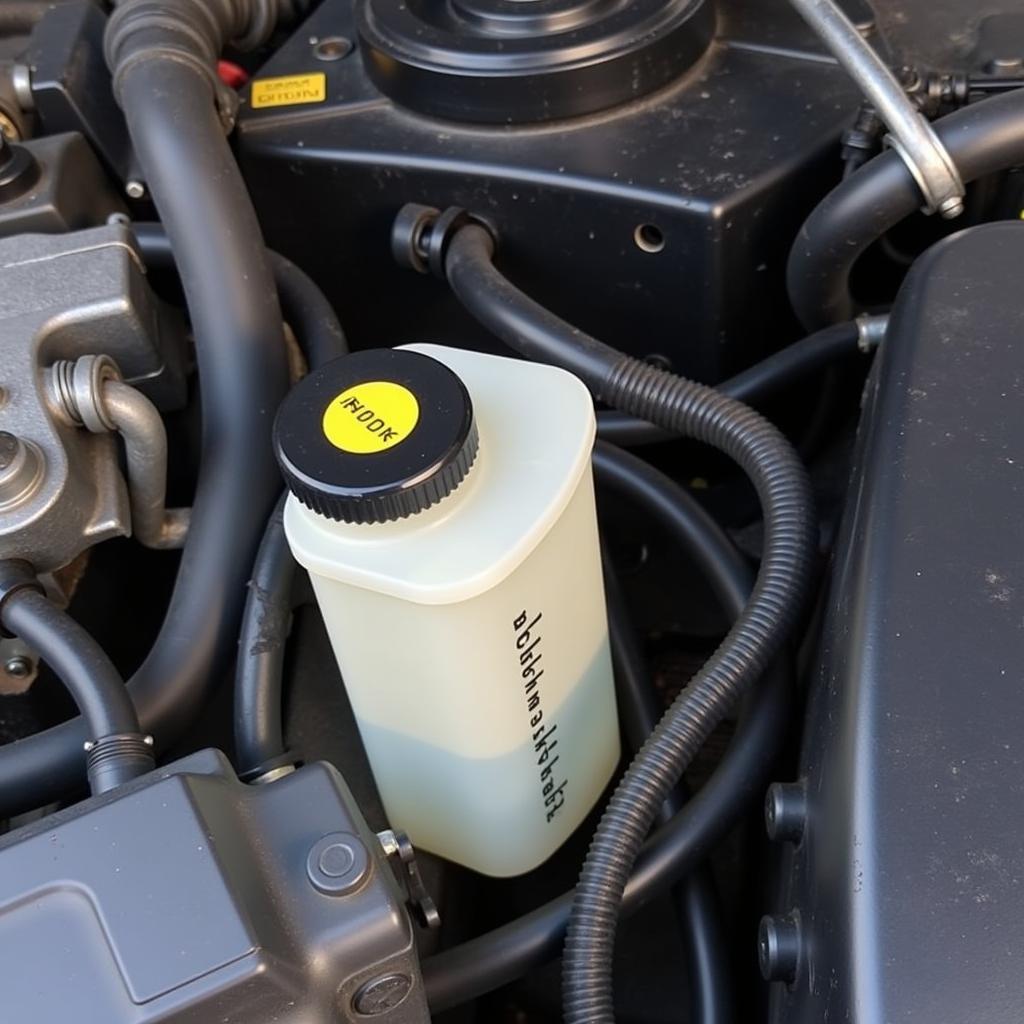The dreaded e36 brake fluid warning light. It’s a sight no BMW E36 owner wants to see illuminate their dashboard. This article provides a comprehensive guide to understanding, diagnosing, and resolving the issues behind the e36 brake fluid warning light, offering practical solutions and expert insights to keep your driving experience safe and enjoyable.
After the initial panic subsides, it’s time to take action. The brake fluid warning light in your E36 can indicate several issues, from a simple low brake fluid level to more serious problems like leaks or failing components within the braking system. Understanding the potential causes is the first step towards effectively addressing the warning light. Let’s dive in.
Knowing where to start your troubleshooting journey can save you time and money. Are you experiencing other symptoms besides the illuminated warning light? This will help narrow down the possibilities. For example, a soft brake pedal often points towards a leak or air in the brake lines, while a grinding noise could indicate worn brake pads. Has your E36 been sitting for a while? This can sometimes lead to slightly lower fluid levels.
 E36 Brake Fluid Reservoir Location
E36 Brake Fluid Reservoir Location
Checking the Brake Fluid Level in Your E36
The first and most straightforward check is the brake fluid level. Locate the brake fluid reservoir, usually a translucent plastic container in the engine bay. The reservoir will have minimum and maximum level markings. If the fluid level is below the minimum mark, you need to top it up with the correct DOT specification brake fluid. Refer to your owner’s manual for the recommended fluid type. However, simply adding fluid is rarely a long-term solution. If the level drops again, you likely have a leak somewhere in the system.
Is your BMW E36 showing warning lights for DSC and ABS in addition to the brake warning light? These systems are closely related and often trigger warnings together. dsc abs brake warning lights e46 may offer insight into similar systems.
Identifying Potential Brake Fluid Leaks
A leak in the brake system is a serious safety concern. Inspect the brake lines, calipers, and wheel cylinders for any signs of leakage. Look for wet spots, dripping fluid, or stained areas. A common area for leaks is around the brake hoses and connections. A thorough inspection is crucial.
“A common mistake people make is assuming a small leak isn’t a big deal,” says Jake Peterson, a seasoned automotive technician with over 20 years of experience. “Even a minor leak can compromise braking performance over time, leading to potentially dangerous situations.”
Worn Brake Pads and the E36 Brake Fluid Warning Light
Worn brake pads can indirectly contribute to a lower brake fluid level. As the pads wear down, the brake calipers extend further to compensate, displacing more brake fluid in the system. If your brake pads are worn, replacing them is essential for both safety and resolving the warning light. You can find helpful information related to brake pad warning lights on an E36 at e36 brake pad warning light.
Have you recently changed your brake pads and the light is still on? It might be necessary to bmw e36 brake warning light reset.
Faulty Brake Sensors and Electrical Issues
The brake fluid level sensor itself could be malfunctioning, triggering the warning light even when the fluid level is adequate. A faulty sensor needs to be replaced. Electrical issues, such as damaged wiring, can also cause the warning light to illuminate erroneously. Check the wiring harness for any signs of damage or corrosion.
“Don’t underestimate the impact of electrical gremlins,” advises Maria Sanchez, an automotive electrical specialist. “A corroded connector or a frayed wire can cause all sorts of unpredictable behavior in your car’s systems, including false warning lights.”
Conclusion
Addressing the e36 brake fluid warning light promptly is paramount for your safety. This article provides a starting point for troubleshooting and diagnosing the potential causes. However, if you are unsure or uncomfortable performing these checks yourself, it’s always best to consult a qualified mechanic. Remember, a properly functioning brake system is vital for your safety and the safety of others on the road. Further information on BMW E36 brake pad warning lights can be found at bmw e36 brake pad warning light. While this article focuses on the E36, similar issues can arise in other vehicles, such as the Hyundai Tucson, where a hyundai tucson brake light warning could indicate different problems.
